A Brief Background On Row Gardening
Row gardening, or planting in rows, is a heavily used concept within agriculture. Farmers use the technique extensively because it is ideal for mechanization and automation of the farm.
For the average gardener, most don’t need the performance of row gardening.
From the subarctic home-scale food production viewpoint, however, there are some things you can learn. For us, we have slightly modified the technique for growing things in Alaska.
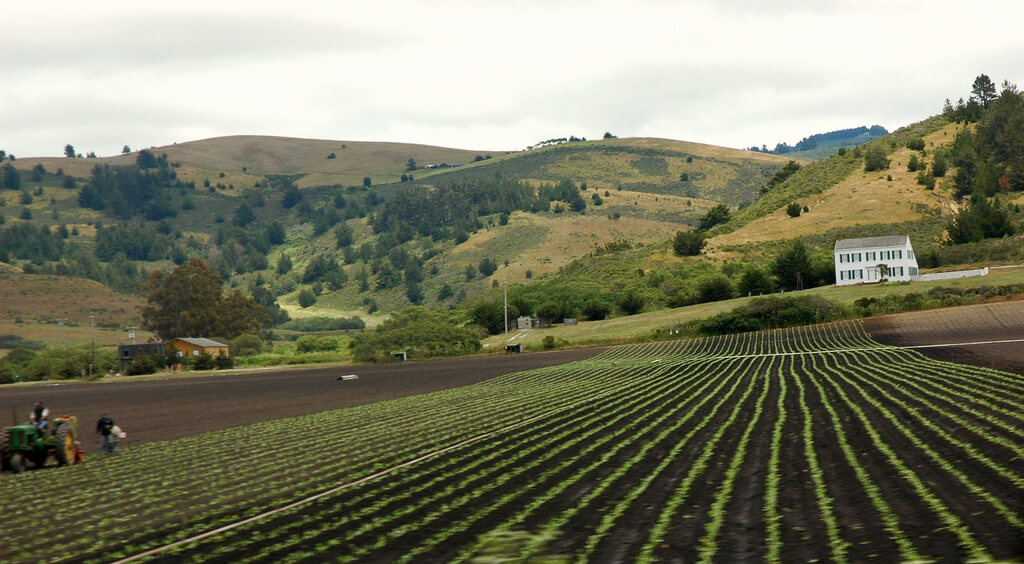 There is certainly nothing wrong with planting whatever you want, wherever you want. We would submit there are many beautiful gardens that are based off a more more random and diversified planting concept.
There is certainly nothing wrong with planting whatever you want, wherever you want. We would submit there are many beautiful gardens that are based off a more more random and diversified planting concept.
The main benefit of row gardening is that it allows for more manageable plant spacing. Instead of having to always think about what a plant will do at full size, you can just follow your seed packet spacing guides and move down the row. It’s very easy to figure out the required spacing when you have a nice square or rectangle. Row gardening also looks really nice when you spend some time getting them right.
 We are not farmers looking to run a harvester down each row. Each row can certainly feature different plants, so it’s not like you have to plant an entire row of some type of plant.
We are not farmers looking to run a harvester down each row. Each row can certainly feature different plants, so it’s not like you have to plant an entire row of some type of plant.
How you use each row will be determined by what you like to eat, what you want to plant and how much of these things you want. What you’re looking for is for your plants to generally share their spacing requirements.
Raised Row Gardening Techniques
When we started researching gardening here in interior Alaska, one of the very common themes that came up was raising your soil.
There’s really significant concept at play with this recommendation for subarctic gardening.
It’s easier for the sun to warm up a raised section of the soil. Giving a vertical edge to the garden bed permits the sun’s rays to hit it directly which in turn, will warm it up more quickly.
Instead of working to heat the entire earth beneath, the sun only has to heat up a smaller section of soil that make up your garden bed.
That means your soil will warm up faster, and your roots will be warmer, sooner!
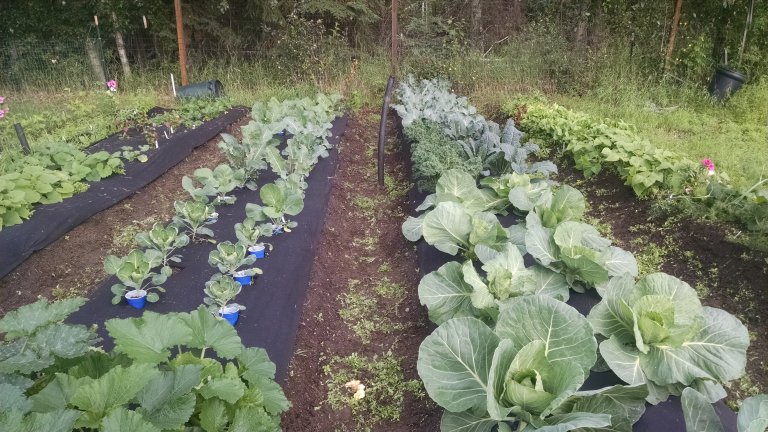
This was our 2016 garden here in Fairbanks, right about a month after last frost. As you can see, we used wide raised row gardening techniques and black fabric mulch to keep down chickweed.
We decided to implement a technique that we would call raised row gardening. It borrows from that commercial farming productivity and combines it with the benefits of raised beds.
The technique can be heavily modified by the common gardener to garden size constraints and production needs.
The idea is simply mound your soil up into a row, roughly 6-18 (15-45 cm) inches taller than your walking paths on either side. The rows can be narrow or they can be wide. Typically a row’s width is 12 to 48 inches, or 30-120 centimetres if you’re not using Freedom units.
Raised rows wider than 4 feet (120 cm) are more difficult to tend to because they exceed your ability to reach in when tending to plants. We’ve found 3 foot (~90 centimeter) to be the perfect size for our gardens.
Building A Raised Row Garden
It’s a good idea to plan out the space that you have and build around that. You may find that a mix of different row sizes will optimize your space most efficiently.
Your plan should generally minimize walking paths as much as possible. Accessing your plants is essential, but it also wastes your overall garden space.
When you’re planning out a space, try to play around with different sized rows. 12 inch, 24 inch, 36 inch and 48 inch are good dimensions to work with. You can also mix row sizes if it makes sense in your space.
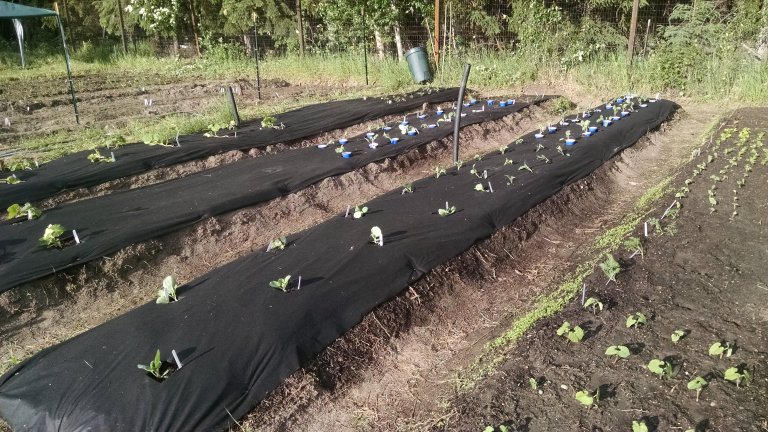
It took us around ten hours or so to develop our wide raised row garden beds. We were fortunate to have a small tiller, which made the work much easier. Our rows follow east-west lines for best sun exposure. Our neighbors on both sides did not use this technique, it was clear this technique is right for Alaska!
Building a raised row is not particularly difficult, but it does take some hard work. Using a tiller will work the best, but it could also be done with a shovel.
Essentially, you want to dig out your pathways and place the soil on your garden row. You want to go down around 6-18 inches or so. You’re not trying to raise the soil as much you are trying to create an exposed face of soil.
We found it helpful to mark out our general design with wooden stakes and garden string. This helped us gain more accuracy and have relatively straight garden rows.
Once you have moved the bulk of the soil, it is beneficial to put efforts into leveling the beds as much as possible. This will make sure water drains into your plant’s roots as opposed to down the row.
For best results in Alaska, it’s a good idea to build the rows in an east-west direction. This will allow the southern sun exposure to warm up one edge of the raised row with direct sunlight.
Using other directions will still have benefits. If your specific garden gets better sun exposure from a different direction (e.g. great sun from the west) then a north to south orientation might work better for you.
A taller row will provide more warmed soil to your plants. You should try to target a minimum of 6 inches (~15 centimetres) but a taller row will provide more warmed soil to your plants.
Comparing Wide vs. Narrow Row Efficiency
When we looked at the overall efficiency of a given space using this technique, it was clear that a wider row was a bit more efficient than a narrow row.
Realistically, you need 18-24 inches of walking space between rows to service your garden. Don’t short change yourself on your walking path, 12 inches (30 cm) is not usually enough!
But, despite their necessity, walking paths are a terrible waste of good growing space!
A narrow row can fit one single row of pretty much any plant you’d grow in a garden. A wide row, however, can often fit two or more total rows of plants.
To explain the difference more visually, we’ll use an example of two identical 12 foot by 12 foot spaces.
One has 12 inch, narrow raised rows. The other has 36 inch wide raised rows. Both feature 24 inch walking paths between the rows and use plants that require 24 inch spacing between each planting.
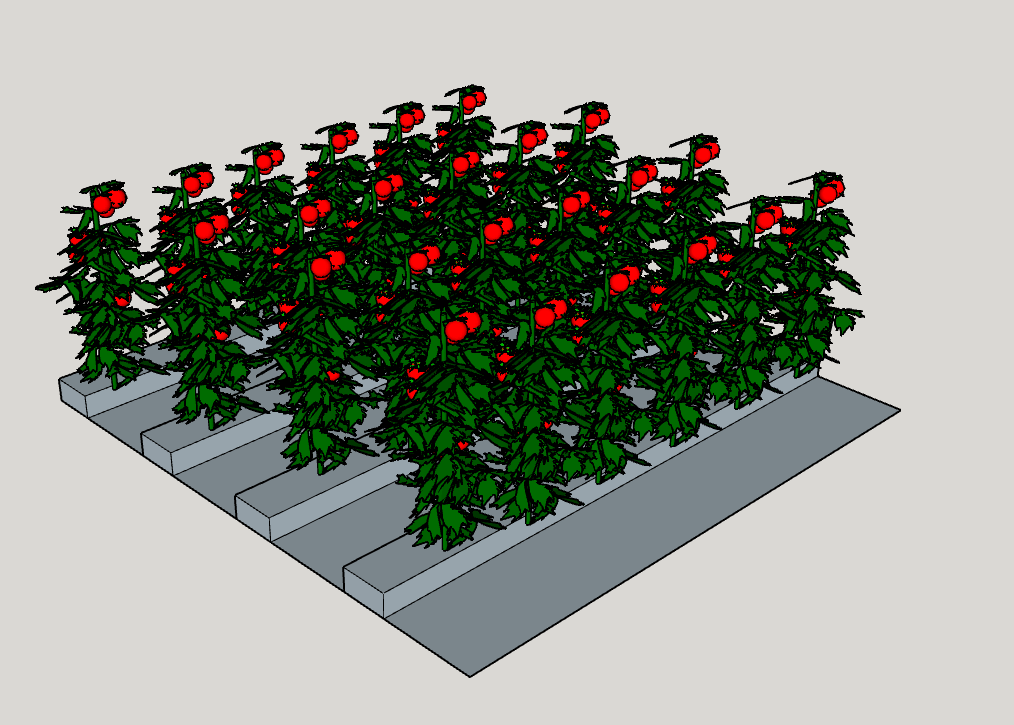 A 12 inch narrow row allows four planting rows. Each row can fit six to seven plants per row at 24″ spacing. At most, the narrow row design will permit 28 plants. One could fit an extra row on the end with a path, but for argument sake let’s assume there is a fence there and it is inaccessible.
A 12 inch narrow row allows four planting rows. Each row can fit six to seven plants per row at 24″ spacing. At most, the narrow row design will permit 28 plants. One could fit an extra row on the end with a path, but for argument sake let’s assume there is a fence there and it is inaccessible.
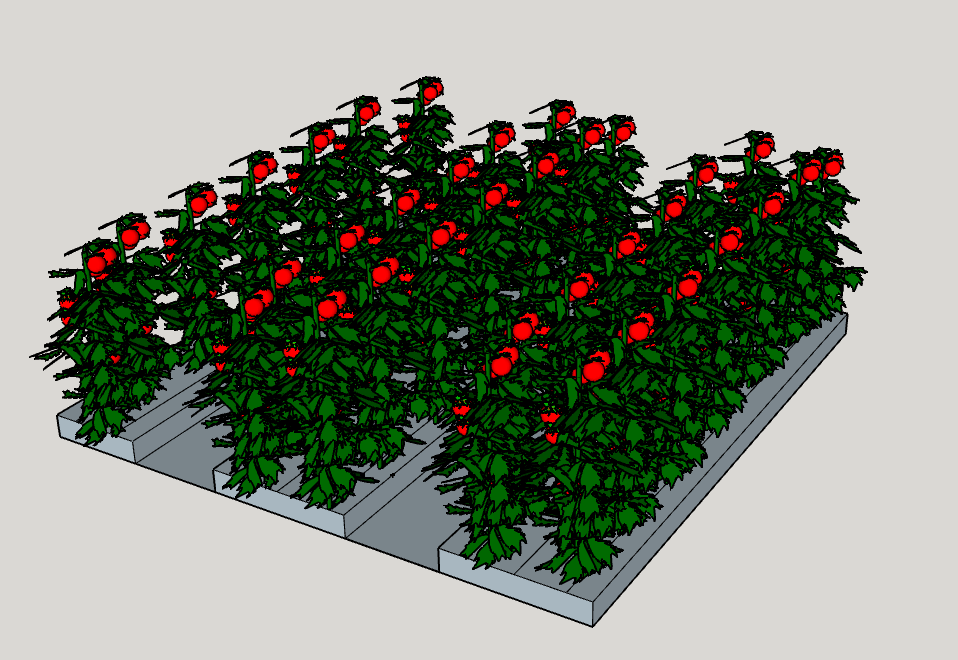
The 36 inch wide row has room for three planting rows, two at 48 inches and one at 24 inches. Each row can fit six to seven plants per row at 24″ spacing. The wide row design will accommodate 35 total plants. This means you get a 25 percent higher yield from the wide row.
As you can see from the above example, the wide raised row plan allows for 25% more yield over the narrow rows. That improvement didn’t cost you any more money, all you have to do is move dirt differently.
The difference between wide and narrow row efficiency becomes even higher if your plants need less spacing.
The bottom line is wide rows almost always allow for more gardening space overall.
Choosing The Right Plants And Plant Spacing
The raised rows that we discuss here are particularly good for larger plants. These are plants that require 12 to 24 inches of plant spacing. They will work for other types of plants, but that’s the types of plants we use our raised rows for.
We have tried different plant spacing over the years. We have settled on 24 inch (60 cm) plant spacing as our universal approach. (At least for plants that need 12-24 inches of spacing.)
While we could get greater density, we learned that we didn’t need to increase plant density to hit our production goals.
This universal spacing allowed us to rotate our crops much more easily. We use weed fabric as a mulch and that fabric has holes in it to create growing spaces. With a universal plant spacing, we can plant anything, anywhere, at least for the most part.
Our 3 foot (90 cm) wide raised rows support two rows of plants at 24 inch spacing. Despite only having 36 inches to work with across the beds, we offset each plant’s spacing from the opposing row to get exactly 24 inches of spacing.
We do recommend keeping any kind of squash in a separate row from other plants. Squash tend to get very large and can smother nearby plants. We like to keep our squash in their own row so they can “do their thing” and not interfere with other types of nearby plants. We also plant only a single row of squash in a 36 inch bed.
What We Grow In Our Wide Raised Rows
We have found our wide raised rows to be exceptionally good at growing certain kinds of plants. Generally speaking, these are the types of plants that we grow using the wide raised row technique:
- Broccoli
- Cauliflower
- Kale
- Collard Greens
- Cabbage
- Kohlrabi
- Squash (both winter & summer)
- Brussels Sprouts
- Potatoes
The common theme among these plants is that they all have similar plant spacing requirements. (Between 12 to 24 inches) This helps us with applying a fairly universal growing method to all these plants and also deal with crop rotation quite easily.
In case you are curious, here are two videos that we produced on how we both prepare and plant our large, raised row garden:
Preparing Our Raised Row Garden

Planting Our Raised Row Garden

Other Raised Row Technique Considerations
There are a few exceptions where a wide raised row gardening might not be what you want. Some plants need a trellis to grow properly as they need to grow vertically.
Plants like beans and peas and will prefer a vertical growing space. For these plants, a narrow row is almost always preferred. A wide row with multiple trellises would create shade and other accessibility problems.
We utilize other growing techniques for things like tomatoes, peppers and most other plants that were not found in the above list. Most of these plants don’t do quite as well in the subarctic ground, so we use more effective garden techniques to grow them.
Some squash, particularly large pumpkins, are not well suited to row techniques. These varieties may best be left to a “field” where they can take over completely without interfering with other plants.
We are fortunate to have observed many gardening techniques in our community garden. For the most part, we’ve found raised row gardening techniques to be extremely successful here in Alaska.
We recommend the technique for certain kinds of vegetables and certainly consider it a “core technique” when it comes to subarctic gardening.
Keep your plants green and roots warm! Happy gardening!
That’s All We Wrote!

Having a good time? We have an ever growing list of insightful and helpful subarctic & cold climate gardening articles, waiting out there for you!
- Cold Climate Gardening Basics 👉
- Growing Your Garden From Seed Indoors 👉
- Advanced Cold Climate Gardening Techniques 👉
- Plant Specific Cold Climate Growing Guides 👉
- Subarctic Perennial Food Forests & Foraging 👉
- Indoor Garden Lighting & Grow Rooms 👉
- Greenhouses & Temperature Control 👉
- Harvesting & Food Preservation 👉
- Solving Cold Climate Garden Problems 👉
- 1 Minute Reads On Tons Of Garden Topics 👉
FrostyGarden.com is 100% ad-free and we do not use affiliate links! This resource is voluntarily supported by our readers. (Like YOU!) If we provided you value, would you consider supporting us?
